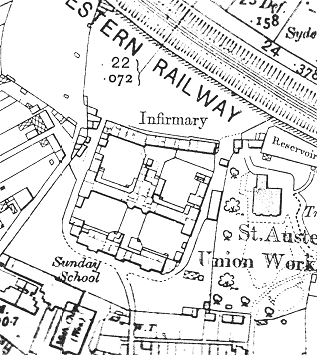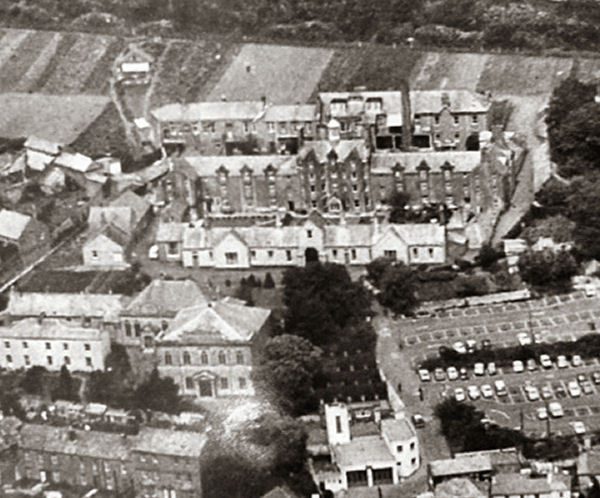St Austell, Cornwall
Up to 1834
A parliamentary report of 1777 recorded a parish workhouse in operation at St Austell for up to 60 inmates.
After 1834
St Austell Poor Law Union was formed on 2nd February 1837. Its operation was overseen by an elected Board of Guardians, 39 in number, representing its 21 constituent parishes as listed below (figures in brackets indicate numbers of Guardians if more than one):
Cornwall:
St Austell (6), St Blazey (3), Creed, St Dennis, St Ewe (2), Fowey (2), Gorran (2), Grampound, Mevagissey (3), St Mewan (2), St Michael Carhayes [Carhays], Roche (2), St Stephen in Brannwell [Brannell] (3), Saint Sampson, Tywardreath (3).
Later Addition: Fowey (from 1894).
The population falling within the union at the 1831 census had been 27,659 with its parishes ranging in size from St Michael Carhayes (population 197) to St Austell itself (8,758). The average annual poor-rate expenditure for the period 1834-36 had been £8,424 or 6s.1d. per head of the population.
The St Austell Union workhouse was built in 1838 on a two-acre site at Priory Road, to the north of St Austell. It was designed by George Gilbert Scott and his partner William Bonython Moffatt who were also the architects for other Cornish workhouses in Liskeard, Penzance, Redruth, and St Columb Major. The Poor Law Commissioners authorised the sum of £5,650 on construction of the building which was intended to accommodate 300 inmates. The workhouse location and layout are shown on the OS map of 1907 by which time the workhouse was shown as St Austell Poor Law Institution:

St Austell site, 1907.

St Austell workhouse, aerial view from the south, date unknown.
St Austell followed Scott and Moffatt's typical design. It had a single-storey front block with a central entrance archway. To the rear was the main accommodation block, three storeys high, and having the Master's quarters at the centre. An infirmary block stood to the rear. A new infirmary block was built at the north in about 1914.
After 1930, the workhouse was redesignated as a Public Assistance Institution. After 1948 it became Sedgemoor Priory Hospital providing care for geriatric patients. It closed in around 1969 and all the buildings subsequently demolished.
Scattered Homes
The St Austel Union operated a number of children's scattered homes in and around St Austell. Their names are recorded as: 'Slades', 'Tregonissey', 'St Blazey Gate', 'Godolphin', and 'Trewhiddle'.'
Staff
Inmates
Records
Note: many repositories impose a closure period of up to 100 years for records identifying individuals. Before travelling a long distance, always check that the records you want to consult will be available.
- Cornwall Archives, Kresen Kernow, Little Vauxhall, Redruth TR15 1AS. Holdings include: Guardians' minute books (1839-43, 1845-8, 1890-2, 1897-1930); Ledgers (1905-15, 1918-29); etc.
Bibliography
- Higginbotham, Peter The Workhouse Encyclopedia (2014, The History Press)
Links
- None.
Acknowledgment
- Thanks to Kathy Anstiss for the photo.
Unless otherwise indicated, this page () is copyright Peter Higginbotham. Contents may not be reproduced without permission.


